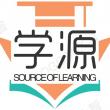
敏捷实践指南(英文版)
新华书店全新正版书籍图书 保证_可开发票_极速发货支持7天无理由
¥ 30.6 4.5折 ¥ 68 全新
库存2件
浙江嘉兴
认证卖家担保交易快速发货售后保障
作者美国项目管理协会
出版社电子工业
ISBN9787121341069
出版时间2018-05
装帧其他
开本其他
定价68元
货号30183486
上书时间2024-10-17
- 最新上架
商品详情
- 品相描述:全新
- 商品描述
-
目录
1.Introduction
2.AN INTRODUCTION TO AGILE
2.1 Definable Work vs High-Uncertainty Work
2.2 The Agile Manifesto and Mindset
2.3 Lean and the Kanban Method
2.4 Uncertainty, Risk, and Life Cycle Selection
3.LIFE CYCLE SELECTION
3.1 Characteristics of Project Life Cycles
3.1.1 Characteristics of Predictive Life Cycles
3.1.2 Characteristics of Iterative Life Cycles
3.1.3 Characteristics of Incremental Life Cycles
3.1.4 Characteristics of Agile Life Cycles
3.1.5 Agile Suitability Filters
3.1.6 Characteristics of Hybrid Life Cycles
3.1.7 Combined Agile and Predictive Approaches
3.1.8 Predominantly Predictive Approach with Some Agile Components
3.1.9 A Largely Agile Approach with a Predictive Component
3.1.10 Hybrid Life Cycles as Fit-For-Purpose
3.1.11 Hybrid Life Cycles as Transition Strategy
3.2 Mixing Agile Approaches
3.3 Project Factors That Influence Tailoring
4.IMPLEMENTING AGILE: CREATING AN AGILE ENVIRONMENT
4.1 Start with an Agile Mindset
4.2 Servant Leadership Empowers the Team
4.2.1 Servant Leader Responsibilities
4.2.2 Role of the Project Manager in an Agile Environment
4.2.3 Project Managers Use Servant Leadership
4.3 Team Composition
4.3.1 Agile Teams
4.3.2 Agile Roles
4.3.3 Generalizing Specialists
4.3.4 Team Structures
4.3.5 Dedicated Team Members
4.3.6 Team Workspaces
4.3.7 Overcoming Organizational Silos
5.IMPLEMENTING AGILE: DELIVERING IN AN AGILE ENVIRONMENT
5.1 Charter the Project and the Team
5.2 Common Agile Practices
5.2.1 Retrospectives
5.2.2 Backlog Preparation
5.2.3 Backlog Refinement
5.2.4 Daily Standups
5.2.5 Demonstrations/Reviews
5.2.6 Planning for Iteration-Based Agile
5.2.7 Execution Practices that Help Teams Deliver Value
5.2.8 How Iterations and Increments Help Deliver Working Product
5.3 Troubleshooting Agile Project Challenges
5.4 Measurements in Agile Projects
5.4.1 Agile Teams Measure Results
6.ORGANIZATIONAL CONSIDERATIONS FOR PROJECT AGILITY
内容摘要
本书是美国项目管理协会新发布的敏捷实践标准,它是理解、评估和使用敏捷和混合的敏捷方法的资源。该实践指南为何时、何地以及如何应用敏捷方法提供指导,并为希望增强敏捷性的实践者和组织提供实用工具。本指南是与PMI其他标准一致,包括项目管理知识体系指南(PMBOK指南第六版),是PMI与敏捷联盟合作开发的成果,是PMI推出的敏捷认证教材之一。
相关推荐
— 没有更多了 —
















以下为对购买帮助不大的评价